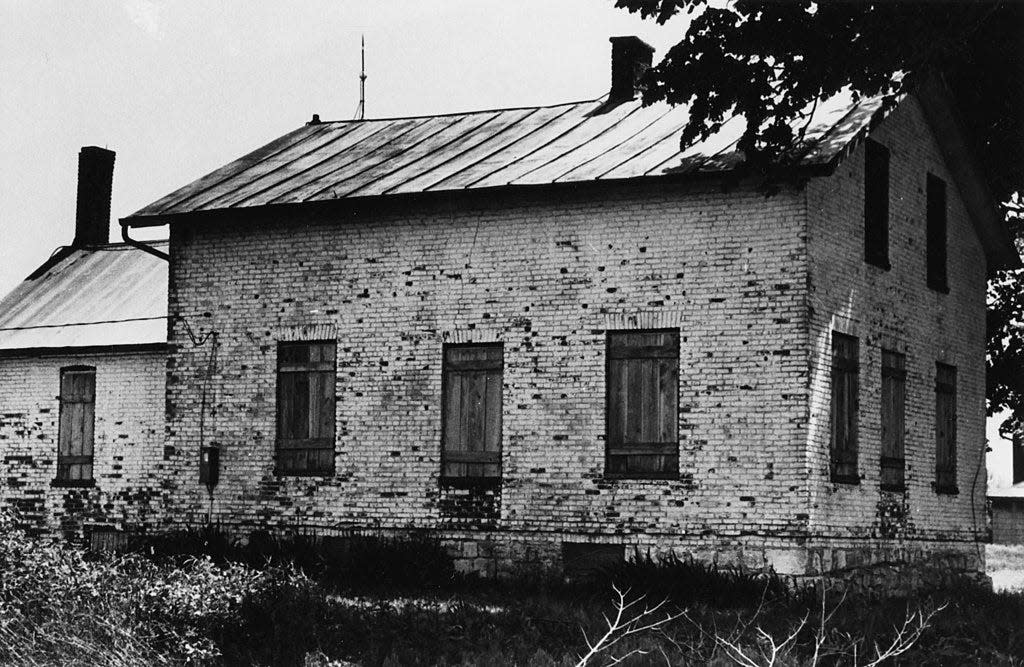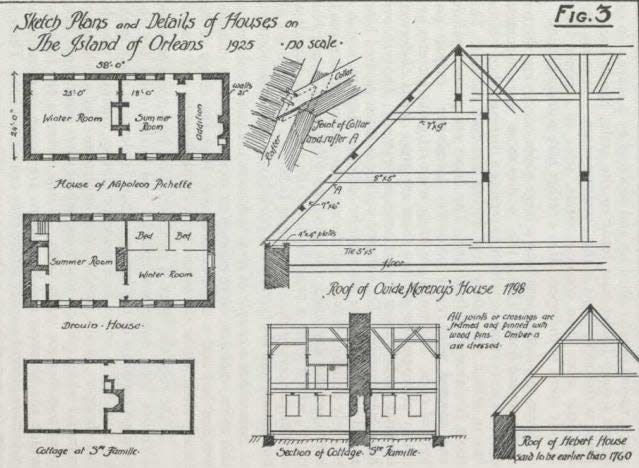Monroe County history: The Fix house once stood at the corner of Sterling State Park

- Oops!Something went wrong.Please try again later.
One of the most interesting historical structures in Monroe no longer exists, but its history dates back to the settlers who migrated from New France to the Lake Erie shoreline.
The Fix House was originally located on land in what is now the northwest corner of Sterling State Park and was deeded prior to the War of 1812.
Nearly 30 years prior, Francis Navarre had settled in this region and worked to obtain a land deal with the Potawatomi tribe. The resulting documentation of Navarre’s agreement with several native leaders (to create the area known as Frenchtown) was written in his the language of his heritage – French. It is this settlement of French-speaking individuals from the native land and from areas in New France (in the case of Navarre – Sandwich, Essex, Ontario, Canada) that had influence on the early architecture of dwellings in areas now considered part of the Monroe, Michigan zip codes.
Joseph Fix emigrated with his family in 1828 from the Alsace-Lorraine region of France (created in 1871 by Germany after the Franco-Prussian War and returned to France in 1918 during World War I). He died a year later, and his widow, Ann, purchased the property on which the Fix House sat in 1832. Ann and son George began constructing buildings on the property, established gardens, planted crops and set up spaces for animal production and other animal-related care. Many of these early buildings were purported to be log structures.
However, it was the design and construction of the Fix House itself in 1853 that paid homage to the family’s French-Canadian family heritage by building what is considered by architectural historians as a French-Canadian vernacular cottage.
According to the noted architecture historian Ramsay Traquair, who was the Macdonald Professor of Architecture at McGill University in Montreal, Quebec, the French-Canadian vernacular cottage originated from the peasant settlers who came to colonize New France and brought with them simple, yet thoughtful methods of 17th and 18th century medieval building.

The French Canadian vernacular cottage’s use of brick and stone – to adapt to the severe winters and harsh conditions of many parts of New France – differed from the widespread use of wood and clapboard materials by native French immigrants who migrated farther south to the U.S. into New England to build French vernacular cottage designs in what is now Maine, Massachusetts, and Rhode Island.
The Fix House measured 24 by 30 feet and was built of brick on a limestone foundation. This main section had a center entrance flanked by two windows. Later additions were added to the rear and the side of the main structure (circa 1870). George Fix lived in the house until his death in 1898. His son, Leanus, inherited the home and farm -- living there until his death in 1960. The state of Michigan acquired the home in 1966 as an addition to Sterling State Park, and it received National Register of Historic Places designation in 1971. However, the home’s poor condition led officials to demolish the home in 1980, and it was removed from the National Register in 1981.
Traquair further described the attributes of the French Canadian vernacular cottage design. For example, Traquair showed how the French Canadian vernacular cottage roof pitch provides both aesthetic and practical benefit. “…the plane holds little snow in the winter and defines the dimensions of the structure,” Traquair adds. “They form a true natural style, simple and lacking perhaps in the graces of skilled ornamentation, but none the less well built, well adapted to their purpose, and with the charm which always accompanies direct and honest work.”
Tom Adamich is President – Visiting Librarian Service, a firm he has operated since 1993. He also is Project Archivist for the Greening Nursery Company and Family Archives.
This article originally appeared on The Monroe News: The Fix house once stood at the corner of Sterling State Park
